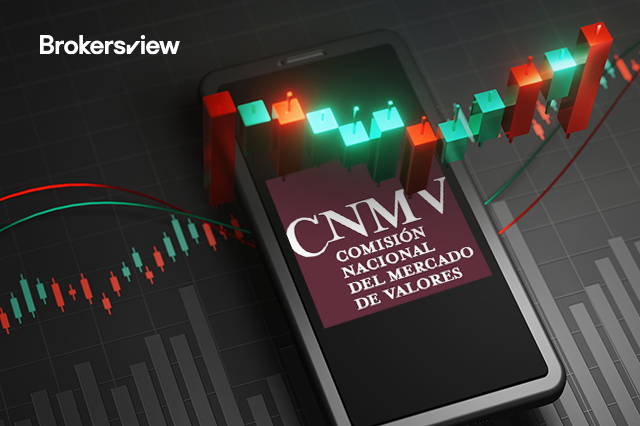- Brokers HOT
- Scam
- BV Assessment NEW
- Rankings
- Regulators
- News
- Claims
- Expo
- Event
- Awards
 Download
Download
The Philippine Peso: A Currency Steeped in History, Economic Significance, and Cultural Identity
In the heart of Southeast Asia, amidst the vibrant archipelago of the Philippines, lies a currency that embodies the nation's rich heritage, economic resilience, and unwavering spirit of progress – the Philippine peso, denoted by the symbols ₱ or PHP. Its journey through the tides of history, economics, and culture mirrors the country's remarkable evolution, a testament to its ability to adapt, thrive, and transcend challenges.

Delving into the Peso's Origins: A Numismatic Legacy
The Philippine peso's roots can be traced back to the 16th century, an era when Spanish galleons traversed the Manila-Acapulco trade route, bringing an influx of Spanish pesos, also known as Spanish dollars, to the Philippines. These coins, bearing the image of Spanish monarchs, quickly gained prominence, becoming the predominant form of currency in the archipelago.
The Spanish peso's widespread adoption marked a significant turning point in the Philippines' monetary landscape, replacing a barter-based system with a standardized currency that facilitated trade and economic activity.
The Gold Standard Era: A Period of Monetary Stability and Transformation
In 1903, under American rule, the Philippines embraced the Gold Standard, a monetary system that linked the peso's value to the price of gold. This period ushered in a degree of stability to the currency, fostering economic growth and facilitating trade.
During this era, the first peso banknotes were introduced, signaling a shift from a purely coin-based currency system to a more modern and efficient one. The incorporation of banknotes not only enhanced the convenience of transactions but also expanded the currency's reach to a wider population.
Navigating Post-Independence Monetary Landscapes: The Birth of the Central Bank of the Philippines
Following the Philippines' independence from the United States in 1946, the Central Bank of the Philippines (BSP) was established, tasked with overseeing the nation's monetary policy. The BSP faced the daunting challenge of stabilizing the peso and guiding the country's monetary system through the complexities of the post-war economic environment.
Under the BSP's stewardship, the peso underwent a series of reforms and adjustments, adapting to the changing economic landscape and demonstrating the institution's commitment to maintaining monetary stability and promoting economic growth.
Embracing a Floating Exchange Rate: Adapting to Global Dynamics
In 1970, a pivotal moment arrived when the Philippines transitioned to a floating exchange rate system, allowing the peso's value to fluctuate freely against other currencies. This move aimed to enhance the peso's flexibility in response to market forces and promote economic growth.
The adoption of a floating exchange rate system marked a departure from the Gold Standard's rigid pegging mechanism and signaled the Philippines' willingness to embrace a more dynamic monetary policy approach.
The Peso's Journey in the Modern Era: Resilience Amidst Fluctuations
Over the decades, the Philippine peso has experienced periods of stability and fluctuations, reflecting the country's economic performance and its integration with the global economy. Its resilience has been tested during times of financial crises and economic downturns, yet it has consistently demonstrated its ability to adapt and weather these challenges.
The peso's journey through the modern era exemplifies its adaptability and its role as a barometer of the country's economic health. Its fluctuations have provided valuable insights into the Philippines' economic performance and its ability to navigate the complexities of the global financial landscape.
A-Pillar of Domestic Trade: Facilitating Economic Activity
Today, the Philippine peso stands as the cornerstone of the country's domestic economy, serving as the primary medium of exchange for goods and services. Its stability and widespread acceptance contribute to fostering a conducive environment for trade and economic activity.
Businesses rely on the peso to conduct transactions, pay wages, and facilitate the flow of goods and services across the archipelago. The peso's purchasing power plays a crucial role in determining consumer spending patterns and shaping overall economic growth.
The peso's significance extends beyond its role in facilitating domestic trade. It also serves as a benchmark for investment decisions and plays a vital role in the country's international economic relations.
Also Read:
The Panamanian Balboa: A Currency Rooted in History and Driving Economic Growth
The Rise of Alternatives: Profiting from a Depreciating U.S. Dollar
How to Invest in Chinese Yuan
Cultural Symbolism and Everyday Usage: A Currency Embedded in the Filipino Identity
The Philippine peso transcends its economic function, holding deep cultural resonance for Filipinos. It represents the nation's financial identity and serves as a tangible reminder of its economic progress.
The peso's presence is deeply embedded in the country's social fabric, from the bustling marketplaces to the everyday transactions of ordinary citizens. Filipinos use the peso to purchase goods and services, conduct financial transactions, and save for their future.
The peso's cultural significance extends beyond its everyday usage. It has inspired artwork, literature, and music, becoming an integral part of the Filipino cultural landscape.
Conclusion: A Currency that Embodies Filipino Resilience and Progress
The Philippine peso, with its rich history, economic significance, and cultural symbolism, stands as a testament to the Filipino nation's resilience, adaptability, and unwavering spirit of progress. It has weathered the storms of history, weathered the waves of economic turmoil, and emerged stronger, more resilient, and more deeply embedded in the Filipino identity.
As the Philippines embarks on a new chapter in its journey, the peso will continue to play a pivotal role in driving economic growth, facilitating trade, and empowering Filipinos to achieve their aspirations. Its stability, adaptability, and enduring cultural significance will anchor the country's economic progress and shape its remarkable future.
The Philippine peso is more than just a currency; it is an embodiment of the Filipino nation's spirit, a symbol of its resilience, and a driving force behind its economic success. As Filipinos navigate the complexities of the 21st century, the peso will continue to stand as a beacon of hope, a symbol of their unwavering commitment to progress, and an instrument for shaping their shared prosperity.










